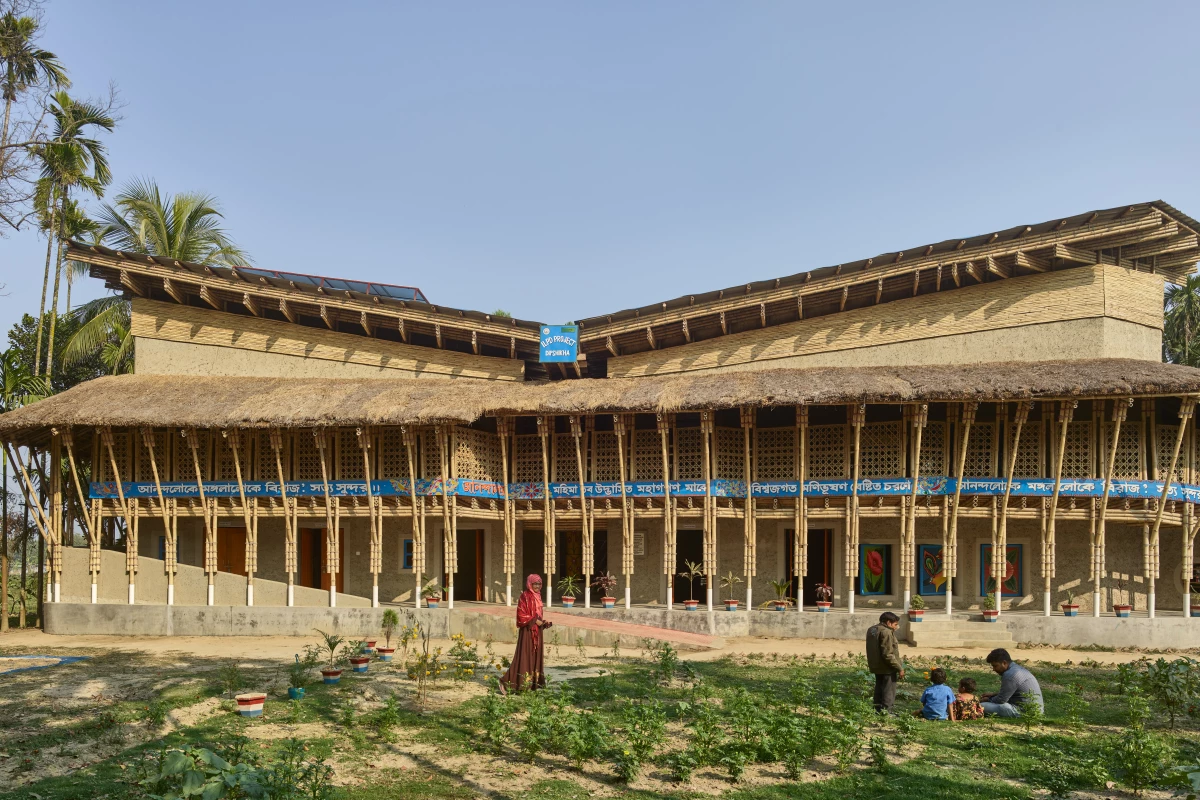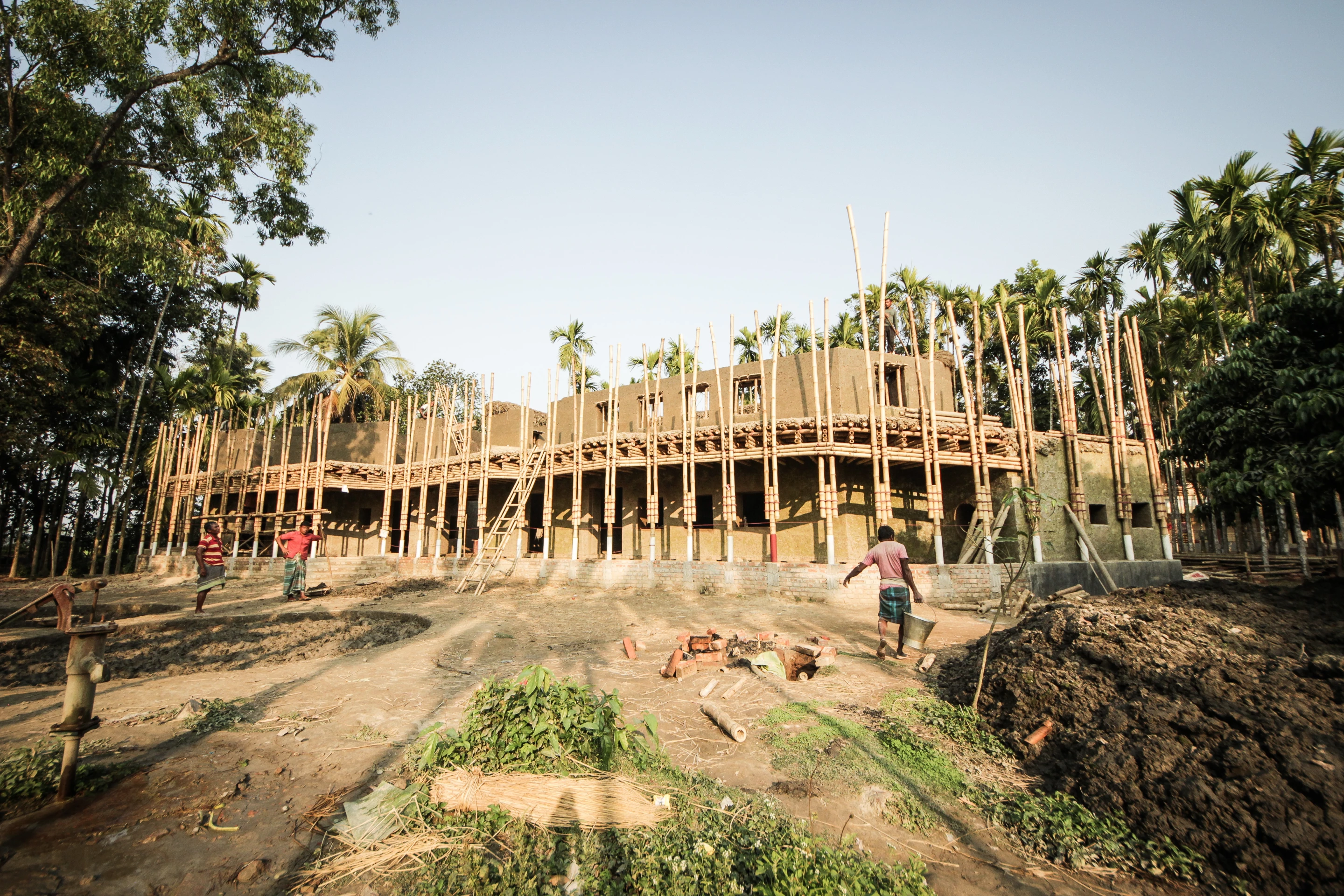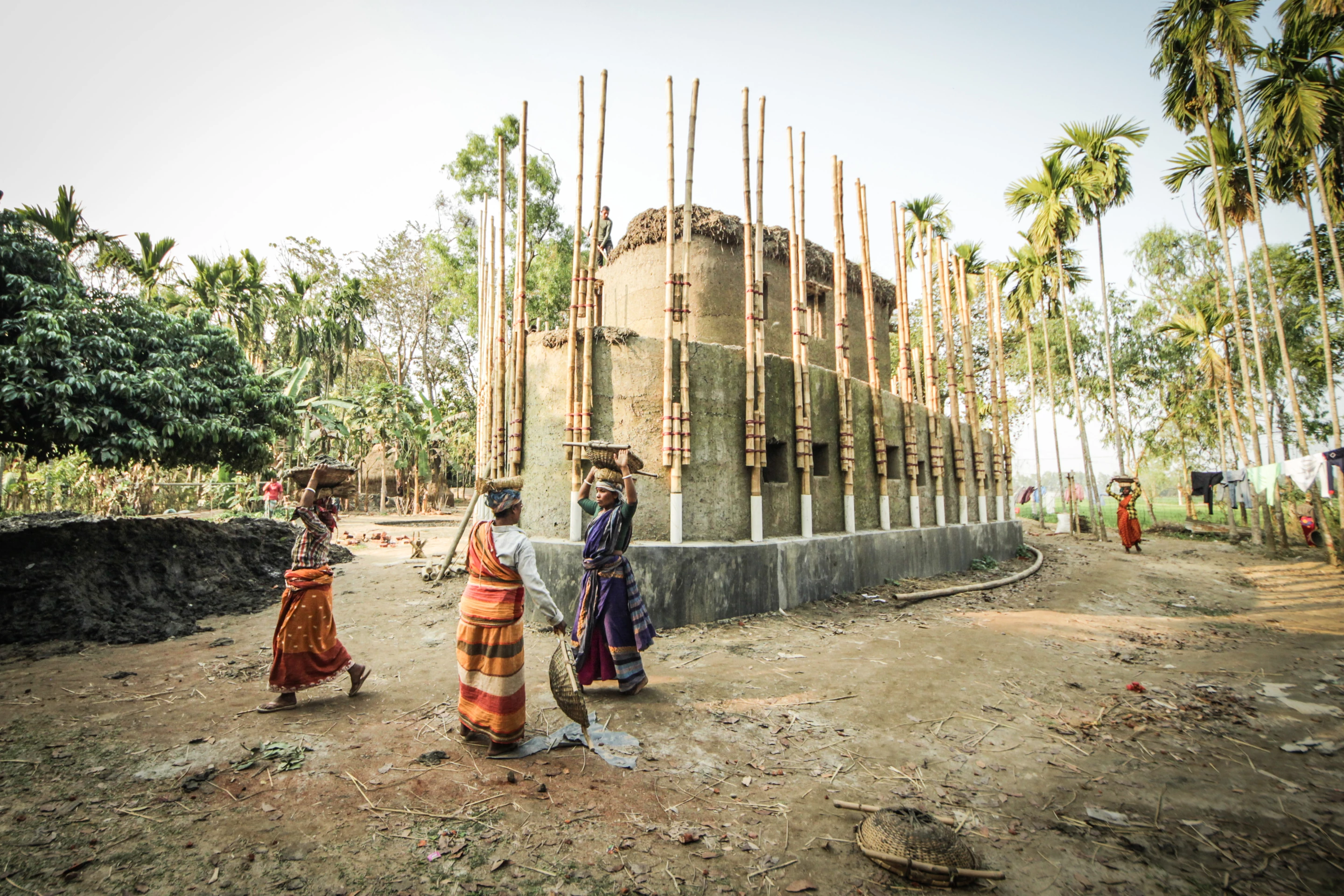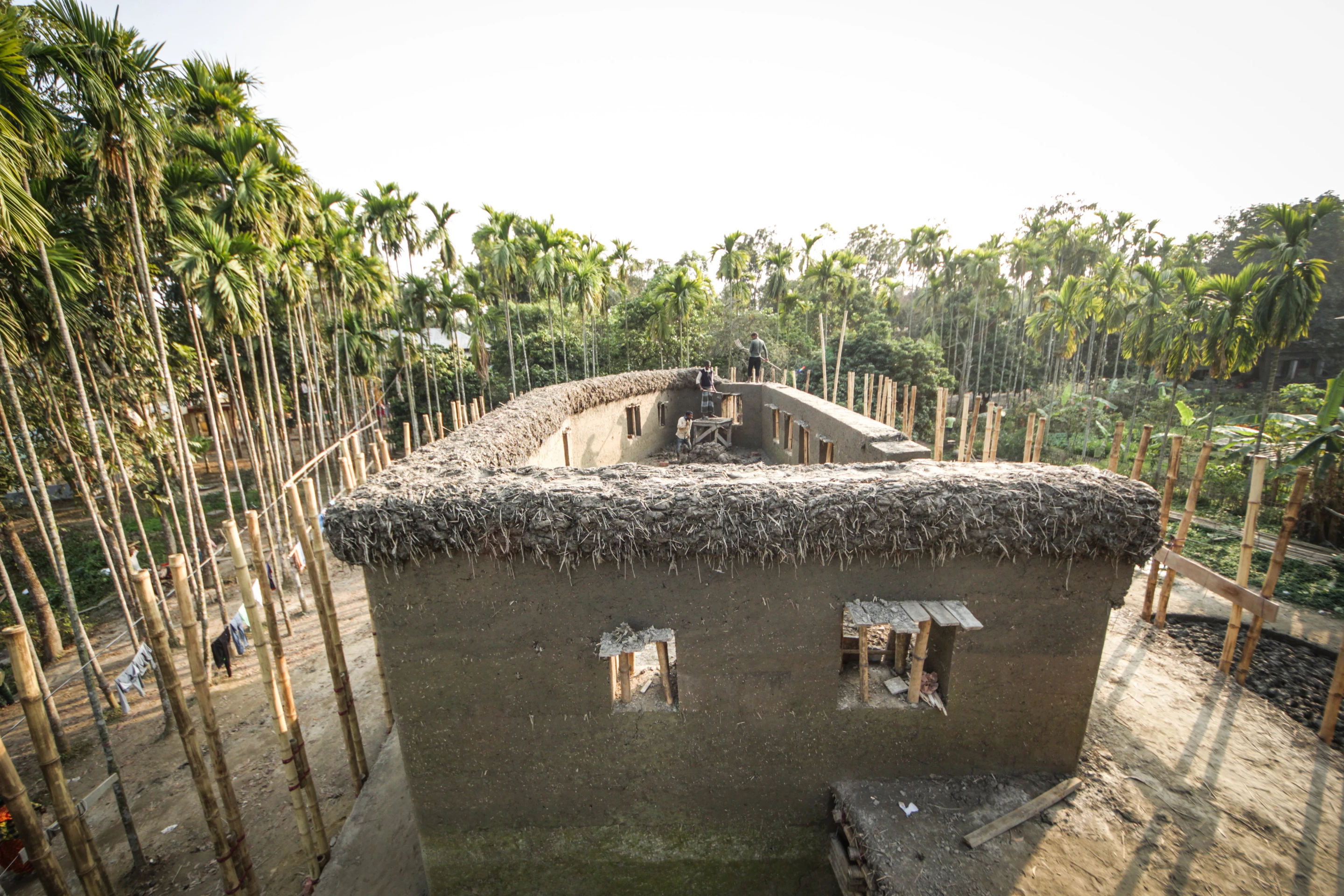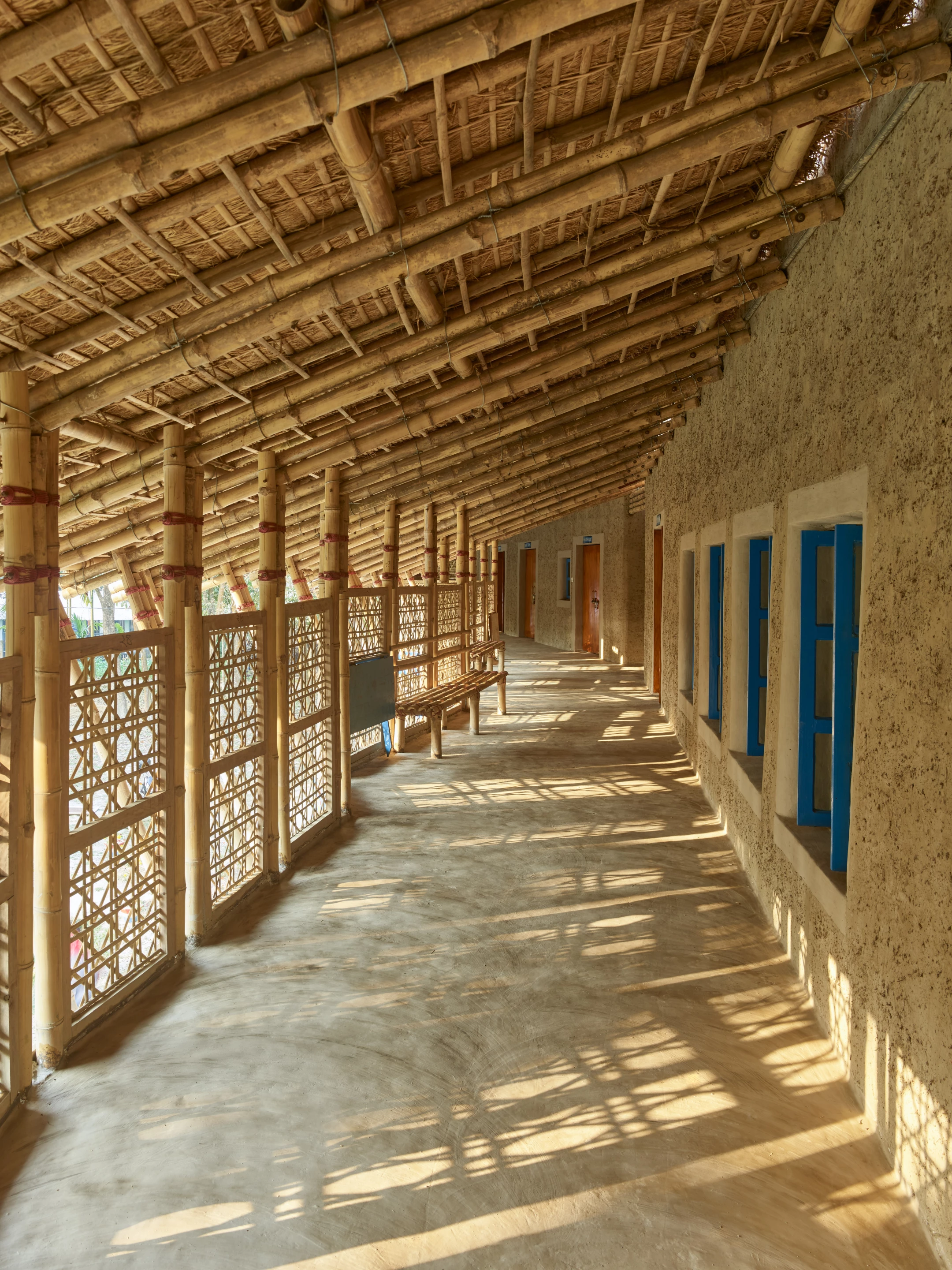Building with mud may bring to mind a simple shelter, but Anandaloy, by German architect Anna Heringer, shows that doesn't necessarily have to be the case. The project showcases the possibilities of building with mud and bamboo, and provides an impressive new therapy center and manufacturing workshop in rural Bangladesh. It has been declared the winner of the Obel Award 2020.
Anandaloy, which means "the place of deep joy" in Bangla, measures a substantial 253 sq m (2,723 sq ft), spread over two floors. The construction process was managed by local contractor Montu Ram Shaw and involved a team of mud and bamboo workers from the local area, including people with disabilities, using traditional cob building techniques.
"It is important to me to show that it is possible to build a modern two-story house with simple resources," explains Anna Heringer, who has been researching mud-based construction for decades. "Mud is not just dirt – it is a real building material of high quality that you can use to build very exact structures – not only small huts but also large engineering structures and even public buildings. It is our creative task to take an old material and make something modern and appropriate to contemporary uses, needs, and aspirations. Mud buildings can be healthy, sustainable, humane, and beautiful."

Inside, the first floor is a therapy center for people with disabilities and is accessed by a sloping ramp (the ramp also provides access to the second floor). Elsewhere are a series of snug cave-like areas meant as a secluded place of retreat for those physically able to explore them.
The upper floor, meanwhile, hosts Dipdii Textiles, which is a clothes-making enterprise for local women that aims to support traditional textile production and improve work opportunities in the village for women.

Anandaloy is the winner of the second Obel Award, which is an annual architecture award created in 2019 that aims to celebrate works that "test the boundaries of architecture and transcend the age in which they are created."
An award ceremony took place on October 21 and, for her efforts, Heringer has received a cash prize of €100,000 (roughly US$84,000), plus an artwork by Argentinian artist Tomás Saraceno.
Sources: Obel Award, Anna Heringer
